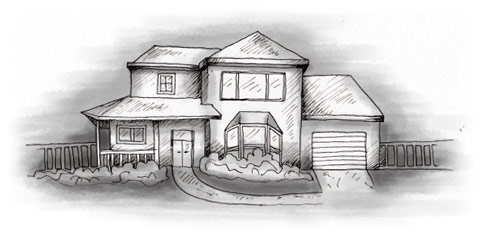
Community properties include apartments, townhouses, and detached homes on a private estate with communal areas and facilities. Almost all French properties that are part of a development are owned en copropriété. In general, the only properties that aren’t community properties are detached houses on individual plots in public streets or on rural land. Under the system of copropriété, owners of community properties own not only their homes (parties privatives) but also a share (quote-part or tantième) of the common elements (parties communes) of a building or development, including foyers, hallways, lifts, patios, gardens, roads, and leisure and sports facilities, according to the size or value of your property.
Some 45 per cent of the French population live in apartments in cities and towns. Many modern community developments are located near coastal or mountain resorts and they may offer a wide range of communal facilities, including a golf course, swimming pools, tennis and squash courts, a gymnasium or fitness club, and a restaurant. Most also have landscaped gardens, high security and a full-time caretaker (gardien/gardienne), and some even have their own ‘village’ and shops.
At the other extreme, some developments consist merely of numerous cramped, tiny studio apartments. Note that community developments planned as holiday homes may not be attractive as permanent homes. Other advantages and disadvantages of community properties are listed below. Further information about community properties can be obtained from the Association des Responsables de Copropriété (ARC), 29 rue Joseph-Python, 75020 Paris (01 40 30 12 82, http://www.unarc.asso.fr ).
Advantages
The advantages of owning a community property may include the following:
- Increased security.
- Lower property taxes than detached homes.
- A range of community sports and leisure facilities.
- Community living with lots of social contacts and the companionship of close neighbours.
- No garden, lawn or pool maintenance.
- Fewer of the responsibilities of individual home ownership.
Community properties are also often in locations where owning a single-family home would be prohibitively expensive, e.g. a popular beach-front or a town centre.
Disadvantages
The disadvantages of community properties may include the following:
- Restrictive rules and regulations.
- Excessively high community fees (owners may have no control over increases).
- A confining living and social environment and lack of privacy.
- Noisy neighbours (particularly if neighbouring apartments are rented to holidaymakers).
- Limited living and storage space.
- Expensive covered or secure parking.
- Acrimonious owners’ meetings, where management and factions may try to push through unpopular proposals.
Note also that communal facilities in a large development may be inundated during peak periods; for example, a large swimming pool won’t look so big when 100 people are using it, and getting a game of tennis or the use of a fitness room may be difficult.
Checks
Before buying a copropriété property, it’s wise to ask current owners about the community. For example:
- Do they like living there?
- What are the fees and restrictions?
- Which is your parking space (if any)?
- Are owners required to pay part of the taxe foncière as well as the taxe d’habitation?
- How noisy are other residents?
- Are the recreational facilities readily accessible?
- Would they buy there again (why or why not)?
- Is the community well managed?
You may also wish to check on your prospective neighbours. Permanent residents should avoid buying in a development with a high percentage of rental units, i.e. units that aren’t owner-occupied. If you’re planning to buy an apartment above the ground floor, you may wish to ensure that the building has an efficient lift. Note that upper floor apartments are both colder in winter and warmer in summer and may incur extra charges for the use of lifts. They do, however, offer more security than ground floor apartments. Note that an apartment that has apartments above and below it will generally be more noisy than a ground or top floor apartment.
Cost
Prices vary considerably with the location, for example from around €50,000 for a studio or one-bedroom apartment in an average location to hundreds of thousands of euros for a luxury apartment in a prime location. Garages and parking spaces must often be purchased separately in developments, a lock-up garage usually costing between €10,000 and €150,000 and a parking space from €3,000 to €5,000.
If you’re buying a resale property, check the price paid for similar properties in the same area or development in recent months, but bear in mind that the price you pay may have more to do with the seller’s circumstances than the price fetched by other properties. Find out how many properties are for sale in a particular development; if there are many on offer, you should investigate why, as there could be management or structural problems. If you’re still keen to buy, you can use any negative aspects to drive a hard bargain. Under the Carrez law, the exact surface area (excluding cellars, garages, parking areas or anything less than 8m2) must be stated in the preliminary contract.
This article is an extract from Buying a home in France. Click here to get a copy now.

